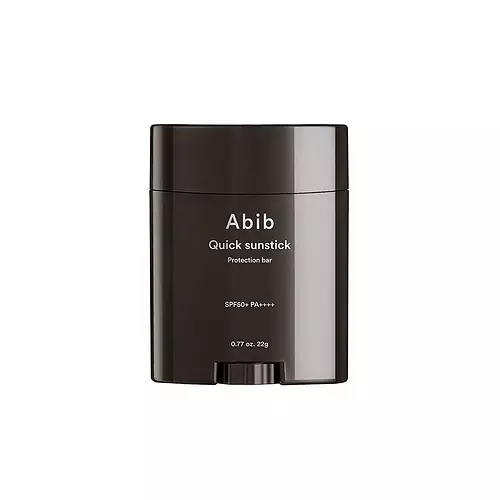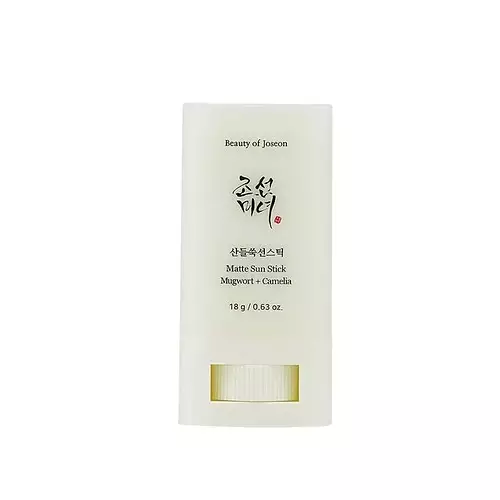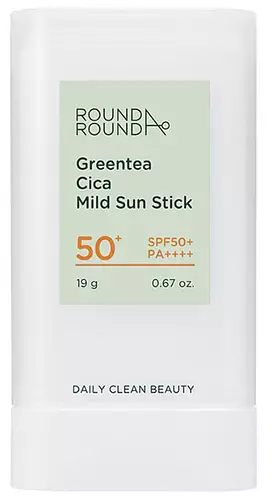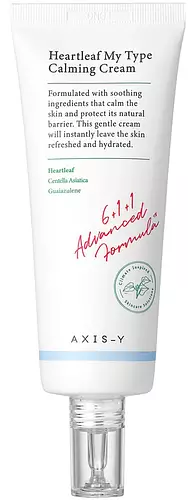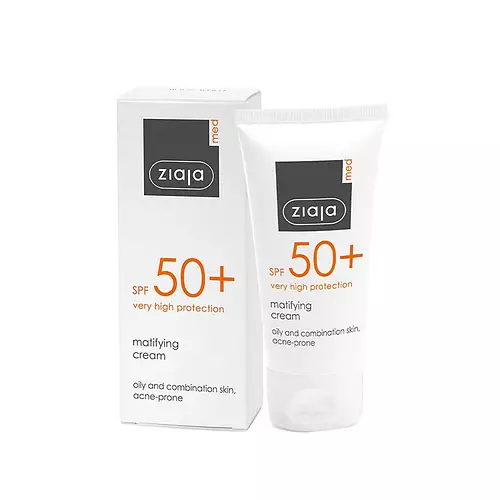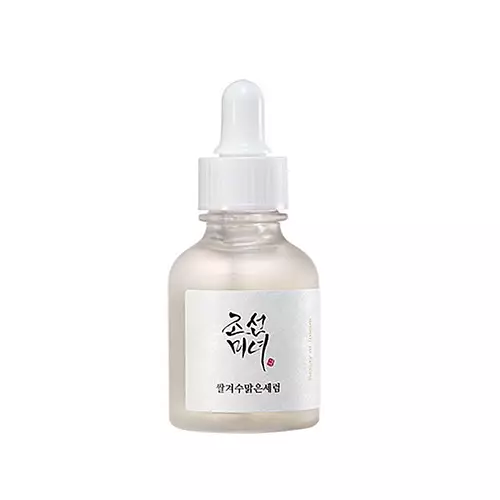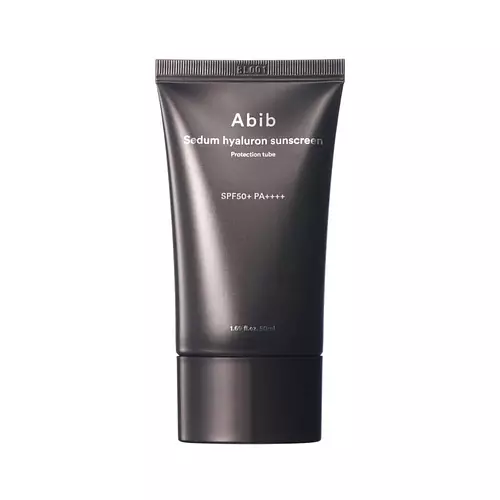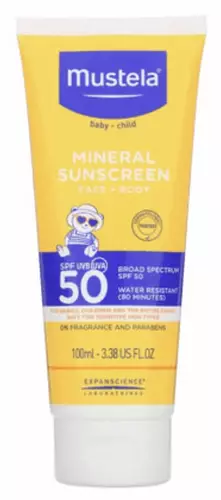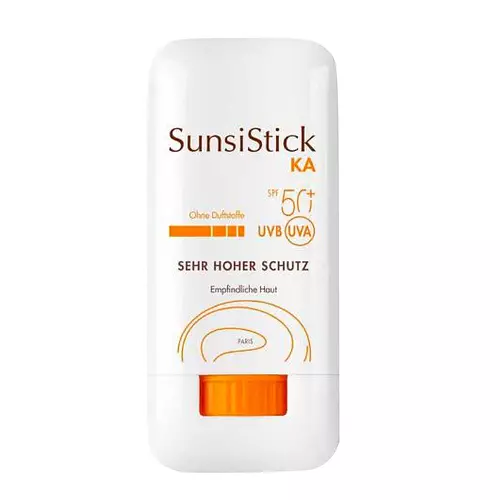Updated on September 22, 2023
Overview
What they are
These products are both sunscreens. They have a total of 8 ingredients in common
Cool Features
They both contain SPF
Suited For
They're both likely to be good for fighting acne, anti aging, dry skin, brightening skin, sensitive skin and reducing pores
Free From
They both do not contain any harsh alcohols, common allergens, parabens or sulfates
We independently verify ingredients, and our claims are backed by peer-reviewed research. Spot a product that needs an update? Let us know.
Ingredient Info
Abib Quick Sunstick Protection Bar SPF50+ PA++++ 30 ingredients
Beauty of Joseon Matte Sun Stick: Mugwort + Camelia SPF 50 PA++++ 48 ingredients
At a glance
Click on any of the items below to learn more
Abib Quick Sunstick Protection Bar SPF50+ PA++++ 30 ingredients
Beauty of Joseon Matte Sun Stick: Mugwort + Camelia SPF 50 PA++++ 48 ingredients
Notable Ingredients
This product contains 5 ingredients that may have this attribute:
This product contains 1 ingredient that may have this attribute:
Benefits
This product contains 2 ingredients that may have this attribute:
This product contains 4 ingredients that may have this attribute:
This product contains 4 ingredients that may have this attribute:
This product contains 1 ingredient that may have this attribute:
This product contains 2 ingredients that may have this attribute:
This product contains 1 ingredient that may have this attribute:
This product contains 1 ingredient that may have this attribute:
Concerns
This product contains 1 ingredient that may have this attribute:
This product contains 1 ingredient that may have this attribute:
This product contains 1 ingredient that may have this attribute:
Notable Ingredients
This product contains 3 ingredients that may have this attribute:
This product contains 2 ingredients that may have this attribute:
This product contains 1 ingredient that may have this attribute:
Benefits
This product contains 2 ingredients that may have this attribute:
This product contains 1 ingredient that may have this attribute:
This product contains 2 ingredients that may have this attribute:
This product contains 1 ingredient that may have this attribute:
This product contains 1 ingredient that may have this attribute:
This product contains 2 ingredients that may have this attribute:
This product contains 1 ingredient that may have this attribute:
This product contains 1 ingredient that may have this attribute:
This product contains 2 ingredients that may have this attribute:
Concerns
This product contains 3 ingredients that may have this attribute:
This product contains 2 ingredients that may have this attribute:
This product contains 1 ingredient that may have this attribute:
This product contains 1 ingredient that may have this attribute:
This product contains 1 ingredient that may have this attribute:
Ingredients Side-by-side
Ingredients Explained
These ingredients are found in both products.
Ingredients higher up in an ingredient list are typically present in a larger amount.
Diethylamino Hydroxybenzoyl Hexyl Benzoate (DHHB) is a chemical UVA absorber. It is formulated for high UVA protection (320-400 nm).
DHHB is well-liked for:
DHHB has been approved by the EU, Japan, Taiwan, and South America for use up to 10%. Unfortunately, it has not been approved for use in the US or Canada due to slow regulatory processes.
This ingredient is soluble in oils, fats, and lipids.
It is an UV absorber. UV absorbers are an agent that absorbs UV rays to protect your skin. They use chemical reactions to convert UV rays into heat and energy.
Learn more about Diethylamino Hydroxybenzoyl Hexyl BenzoateYou might know this ingredient as Tinosorb S or Bemotrizinol. It is a UV filter that covers both UVA and UVB rays.
Bemotrizinol has two peak UV absorption peaks ( 310 and 340 nm) and is able to absorb both UV-A and UV-B rays. Skin exposed to UV causes free-radical molecules to form. This ingredient works by preventing the UV from reaching your skin.
It is highly photostable and helps prevent the photodegration of other sunscreen ingredients such as avobenzone.
Bemotrizinol is not approved in the US but is allowed in the EU, Australia, and Asia.
In fact, it is the most effective UV absorber at maximum concentration (measured by SPF) permitted by in the EU.
It is oil-soluble.
Learn more about Bis-Ethylhexyloxyphenol Methoxyphenyl TriazineCamellia Sinensis Leaf Extract is derived from the leaves of the tea plant. Black tea, green tea, and oolong tea are all harvested from this plant.
This ingredient has many skin benefits:
This ingredient contains polyphenols, a strong antioxidant. Antioxidants help fight off molecules that damage skin cells.
On top of that, the antioxidants in green tea neutralize free-radicals from the sun. This gives the skin some extra UV protection, but should not replace sunscreen.
Many components of tea have anti-inflammatory properties.
Polyphenols and L-theanine help soothe the skin and reduce irritation. The caffeine in Camellia Sinensis Leaf Extract helps calm inflamed blood vessels.
Other compounds found in tea include: Vitamin Bs, linoleic acid, magnesium, calcium, iron, and zinc.
Research has shown both drinking Camellia Sinensis Leaf Tea and applying it to the skin can help boost skin elasticity and hydration. Studies also show using tea extract may reduce sebum, or oil, production.
Learn more about Camellia Sinensis Leaf ExtractCentella Asiatica Extract (Centella) is derived from an herb native to Southeast Asia. It is famous for its anti-inflammatory and soothing properties.
Centella is rich in antioxidants and amino acids, such as Madecassic Acid and Asiaticoside.
Studies show the compounds in centella help with:
The combination of all these properties makes centella effective at soothing, hydrating, and protecting the skin.
Other great components of centella include Vitamin A, vitamin C, several B vitamins, and Asiatic Acid.
Fun fact: Centella has been used as a medicine and in food for many centuries. As a medicine, it is used to treat burns, scratches, and wounds.
Learn more about Centella Asiatica ExtractGlycerin is already naturally found in your skin. It helps moisturize and protect your skin.
A study from 2016 found glycerin to be more effective as a humectant than AHAs and hyaluronic acid.
As a humectant, it helps the skin stay hydrated by pulling moisture to your skin. The low molecular weight of glycerin allows it to pull moisture into the deeper layers of your skin.
Hydrated skin improves your skin barrier; Your skin barrier helps protect against irritants and bacteria.
Glycerin has also been found to have antimicrobial and antiviral properties. Due to these properties, glycerin is often used in wound and burn treatments.
In cosmetics, glycerin is usually derived from plants such as soybean or palm. However, it can also be sourced from animals, such as tallow or animal fat.
This ingredient is organic, colorless, odorless, and non-toxic.
Glycerin is the name for this ingredient in American English. British English uses Glycerol/Glycerine.
Learn more about GlycerinWater. It's the most common cosmetic ingredient of all. You'll usually see it at the top of ingredient lists, meaning that it makes up the largest part of the product.
So why is it so popular? Water most often acts as a solvent - this means that it helps dissolve other ingredients into the formulation.
You'll also recognize water as that liquid we all need to stay alive. Talk about multi-purpose! If you see this, drink a glass of water. Stay hydrated!
Learn more about WaterButylene Glycol (or BG) is used within cosmetic products for a few different reasons:
- It is a solvent, meaning that it helps to dissolve other ingredients. This also enhances the absorption of the product into one's skin.
- It is a humectant, which means that it helps attract moisture into the skin.
- It helps improve product application.
Overall, Butylene Glycol is a safe and well-rounded ingredient. It is unlikely to irritate skin, and works well with pretty much all other ingredients.
Ethylhexylglycerin (we can't pronounce this either) is commonly used as a preservative and skin softener. It is derived from glyceryl.
You might see Ethylhexylglycerin often paired with other preservatives such as phenoxyethanol. Ethylhexylglycerin has been found to increase the effectiveness of these other preservatives.
Ingredient Ratings
Here's what our community thinks of the ingredients in these two products.
When to use
Abib Quick Sunstick Protection Bar SPF50+ PA++++ 30 ingredients
Beauty of Joseon Matte Sun Stick: Mugwort + Camelia SPF 50 PA++++ 48 ingredients


Reviews
Here's what our community thinks
Abib Quick Sunstick Protection Bar SPF50+ PA++++ 30 ingredients
AshN.
(Using Since Jun 2023) Love using this for sunscreen reapplication. It's portable (small enough to fit in my cross-body bag), relatively affordable...
(Using Since Jun 2023) Love using this for sunscreen reapplication. It's portable (small enough to fit in my cross-body bag), relatively affordable (compared to most hyped sunscreen sticks), considering the SPF value/rating and the amount that you get. Big fan of the shape as it contours around the face easily, no white cast, not irritating to my sensitive skin despite the light, pleasant scent. As I only wear under-eye concealer most days, I can't speak on if it goes well over makeup. But I've notice that when I do apply it over my under-eye area (4-5 swipes) it doesn't remove much product (Then again I apply setting spray/powder in my makeup application) At most I just have to touch it up with a small brush. I would say it's also slightly mattifies my moisturizer.
EvgeniaLoik_986
Ok but not as amazing as everyone says!
I wanted to like it, but after using it for the whole summer l think you may skip this one on your hunt for...
Ok but not as amazing as everyone says!
I wanted to like it, but after using it for the whole summer l think you may skip this one on your hunt for a perfect sun stick. Things l think makes it a very overhyped product are;
A) You can’t layer it on top of the makeup - it slips and slipped okay but it does drag your foundation on and there is no saving grace after you’ve applied it on top.
B) I have combo skin and usually can get away without too much blotting and powder but this stick makes me look like a greasy mess; to be fair it’s not super silicony to the touch but it does look like you are greasy nevertheless
C) and last but no least, it’ feels like a waste of money - if you accidentally drag it a bit too much (which l did) it might fall off in places so it’s agronomical shape looses it’s function;
Anyway, buy at your discretion
Beauty of Joseon Matte Sun Stick: Mugwort + Camelia SPF 50 PA++++ 48 ingredients
Claire L.
I love this for secondary application. I don't feel confident in getting an even application with the stick alone, so I start with the BOJ Relief...
I love this for secondary application. I don't feel confident in getting an even application with the stick alone, so I start with the BOJ Relief Sun in the morning and use the stick for reapplication during the day. I love the matte effect and how soft my skin feels. The small size slips easily into my purse. I'm obsessed with BOJ sunscreens!
SkincareSimba
I apply the Beauty of Joseon Relief Sun: Rice + Probiotics sunscreen on my entire face and once that one gets absorbed I apply this one on the...
I apply the Beauty of Joseon Relief Sun: Rice + Probiotics sunscreen on my entire face and once that one gets absorbed I apply this one on the nose, forehead, and chin to reduce the shine/glow on those areas but leave the glow on the cheeks.
I think this combination is gold for me, specially for summer when I want a nice glow without looking oily :)
